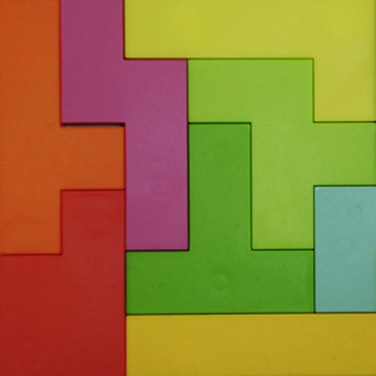Polyominoes

A polyomino is a shape composed of identical squares which share at least one common side. As the word suggests, "polyomino" is a generalisation of "domino". In each case, the prefix indicates the number of squares the shape comprises.
Numerous combinatorial geometrical games are based on polyominoes. They involve building a particular predefined shape or covering a rectangle according to certain criteria. A two-player game was also invented based on twelve pentominoes (shapes made of five squares).
History
Henry Ernest Dudeney published a pentomino problem in "The Canterbury Puzzlesback" in 1907. In 1953 Solomon W. Golomb gave a lecture to the Harvard Mathematical Club in which he coined the term "polyomino". One year later, his work was published in "American Mathematical Monthly". The interest in polyominoes grew following the publication of an article by Martin Gardner in "Scientific American" (May 1957). In 1965 Golomb published his book "Polyominoes", which has since become a classic.
Mathematics
There is no general formula to determine the number of different polyominoes with n squares. The only method consists in explicitly constructing the polyominoes with n squares, starting with those made of n – 1 squares. Here, two polyominoes that merge into each other through rotation or reflection are deemed identical.
Many questions on covering a board with polyominoes can be answered elegantly by colouring the squares. This reduces the evidence to counting the squares of a certain colour. This indicates for instance that a chess board cannot be covered with dominoes if the two white spaces in the corners have been removed because the number of black and white spaces must be identical.